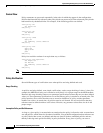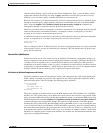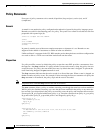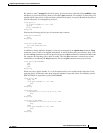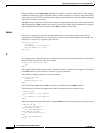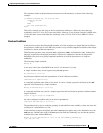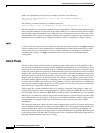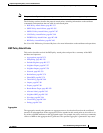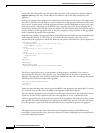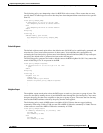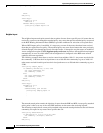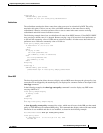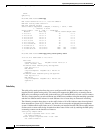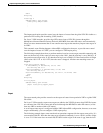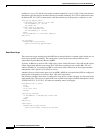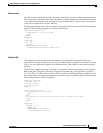
Implementing Routing Policy on Cisco IOS XR Software
Information About Implementing Routing Policy on Cisco IOS XR Software
RC-376
Cisco IOS XR Routing Configuration Guide
OL-14356-01
evaluated by the named policy pass the policy. More specifics of the aggregate are filtered using the
suppress-route keyword. Any actions taken to set attributes in the route affect attributes on the
aggregate.
In the policy language, the configuration is controlled by which routes pass the policy. The suppress map
was used to selectively filter or suppress specific components of the aggregate when the summary-only
flag is not set. In other words, when the aggregate and more specific components are being sent, some
of the more specific components can be filtered using a suppress map. In the policy language, this is
controlled by selecting the route and setting the suppress flag. The attribute-map allowed the user to set
specific attributes on the aggregated route. In the policy language, setting attributes on the aggregated
route is controlled by normal action operations.
In the following example, the aggregate address 10.0.0.0/8 is generated if there are any component routes
in the range 10.0.0.0/8 ge 8 le 25 except for 10.2.0.0/24. Because summary-only is not set, all
components of the aggregate are advertised. However, the specific component 10.1.0.0 are suppressed.
route-policy sample
if destination in (10.0.0.0/8 ge 8 le 25) then
set community (10:33)
endif
if destination in (10.2.0.0/24) then
drop
endif
if destination in (10.1.0.0/24) then
suppress-route
endif
end-policy
router bgp 2
address-family ipv4
aggregate-address 10.0.0.0/8 route-policy sample
.
.
.
The effect of aggregation policy on the attributes of the aggregate is cumulative. Every time an
aggregation policy matches a more specific route, the set operations in the policy may modify the
aggregate. The aggregate in the following example has a MED value that varies according to the number
of more specific routes that comprise the aggregate.
route-policy bumping-aggregation
set med +5
end-policy
If there are three matching more specific routes, the MED of the aggregate is the default plus 15; if there
are seventeen more specific routes, the MED of the aggregate is the default plus 85.
The order that the aggregation policy is applied to prefix paths is deterministic but unspecified. That is,
a given set of routes always appears in the same order, but there is no way to predict the order.
A drop in aggregation policy does not prevent generation of an aggregate, but it does prevent the current
more specific route from contributing to the aggregate. If another more specific route gives the route a
pass, the aggregate is generated. Only one more specific pass is required to generate an aggregate.
Dampening
The dampening attach point controls the default route-dampening behavior within BGP. Unless
overridden by a more specific policy on the associate peer, all routes in BGP apply the associated policy
to set their dampening attributes.



